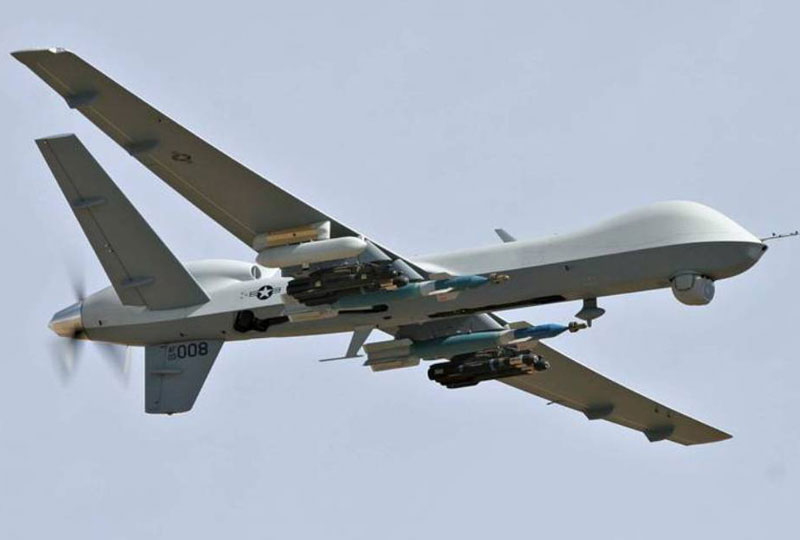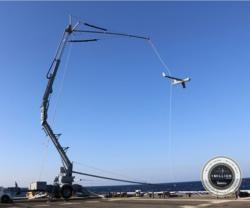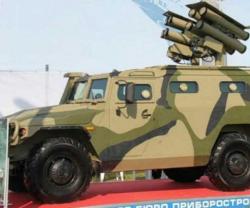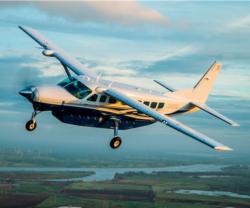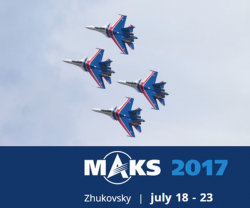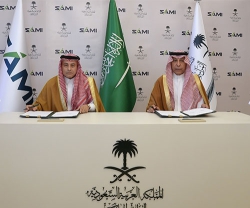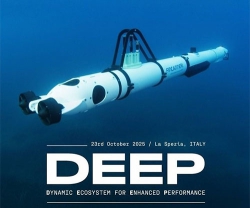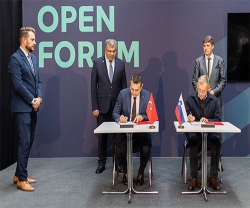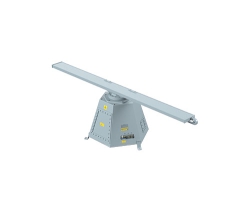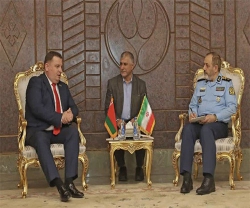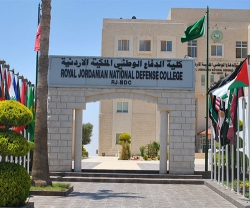GA-ASI Demonstrates Electronic Attack in USMC Exercise
16.08.2013 North America
General Atomics Aeronautical Systems, (GA-ASI), a leading manufacturer of Remotely Piloted Aircraft (RPA), tactical reconnaissance radars, and electro-optic surveillance systems, announced its successful demonstration of Predator B’s Electronic Attack capability at the U.S. Marine Corp’s (USMC’s) Weapons and Tactics Instructor (WTI) course held at Marine Corp Air Station (MCAS) Yuma on April 12.
“With this highly effective display of Predator B as a viable and capable EW platform, we are poised to provide even greater value as a multi-mission RPA solution for the Marines to address their EW requirements,” said Frank W. Pace, president, Aircraft Systems Group, GA-ASI.
The purpose of the demonstration was to evaluate the viability of a RPA to conduct electronic warfare missions against enemy air defenses in support of tactical strike aircraft. GA-ASI participated with a company-owned Predator B RPA equipped with a jamming pod containing a Northrop Grumman Digital Receiver/Exciter and controlled by a GA-ASI Ground Control Station (GCS).
Predator B was fully integrated into the advanced Command and Control (C2) networks and Electronic Warfare (EW) architecture of the exercise, with over 20 aircraft participating. The Northrop Grumman payload proved to be effective and seamlessly integrated with the Predator B avionics, command and control architecture.
Future demonstrations will expand on the success and lessons learned from the use of Predator B to execute a multi-node approach against a more capable Integrated Air Defense System (IADS) in concert with other unmanned aircraft systems and EA-6B Prowlers in future training exercises.
The focus of future demonstrations will be on a more integrated and networked EW capability, expanding the C2 network to direct the aircraft’s EW payload and other assets from the Cyber/Electronic Warfare Coordination Cell (C/EWCC) located at MCAS Yuma. In future demonstrations, the C/EWCC will support large aircraft strike packages addressing simulated targets over 300 miles north located at Naval Air Weapons Station, China Lake.
“We are using multiple platforms in a networked approach to prosecute the IADS to protect our strikers as they hit their targets. It is a non-traditional approach to this problem set, but we believe this is where the future is headed for EW,” stated Major Charles Dudik, HQMC Aviation EW Requirements Officer.
“With this highly effective display of Predator B as a viable and capable EW platform, we are poised to provide even greater value as a multi-mission RPA solution for the Marines to address their EW requirements,” said Frank W. Pace, president, Aircraft Systems Group, GA-ASI.
The purpose of the demonstration was to evaluate the viability of a RPA to conduct electronic warfare missions against enemy air defenses in support of tactical strike aircraft. GA-ASI participated with a company-owned Predator B RPA equipped with a jamming pod containing a Northrop Grumman Digital Receiver/Exciter and controlled by a GA-ASI Ground Control Station (GCS).
Predator B was fully integrated into the advanced Command and Control (C2) networks and Electronic Warfare (EW) architecture of the exercise, with over 20 aircraft participating. The Northrop Grumman payload proved to be effective and seamlessly integrated with the Predator B avionics, command and control architecture.
Future demonstrations will expand on the success and lessons learned from the use of Predator B to execute a multi-node approach against a more capable Integrated Air Defense System (IADS) in concert with other unmanned aircraft systems and EA-6B Prowlers in future training exercises.
The focus of future demonstrations will be on a more integrated and networked EW capability, expanding the C2 network to direct the aircraft’s EW payload and other assets from the Cyber/Electronic Warfare Coordination Cell (C/EWCC) located at MCAS Yuma. In future demonstrations, the C/EWCC will support large aircraft strike packages addressing simulated targets over 300 miles north located at Naval Air Weapons Station, China Lake.
“We are using multiple platforms in a networked approach to prosecute the IADS to protect our strikers as they hit their targets. It is a non-traditional approach to this problem set, but we believe this is where the future is headed for EW,” stated Major Charles Dudik, HQMC Aviation EW Requirements Officer.
Latest news
Latest events
Dubai International Air Chiefs’ Conference (DIACC 2025)
16 Nov 2025Atlantis, The Palm Dubai - United Arab EmiratesDubai Airshow
17 - 21 Nov 2025Dubai World Central (DWC) - United Arab EmiratesEgypt Defence Expo (EDEX)
01 - 04 Dec 2025Egypt International Exhibition Center New Cairo - EgyptDoha International Maritime Defence Exhibition & Conference (DIMDEX 2026)
19 - 22 Jan 2026Doha - Qatar

